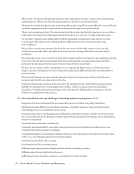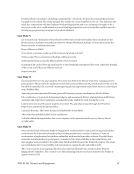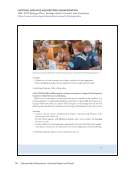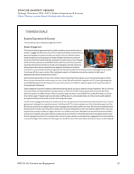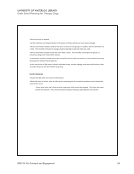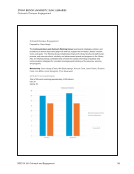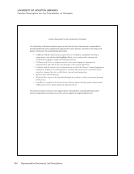100 Survey Results: Survey Questions and Responses The director of inclusion, diversity, & equity reached out to the high school principal, teachers, and counselors in five counties, roughly the same population served by the local public library (Jefferson Madison Regional Library, JMRL). She made applications to the program available only to those high school administrators and faculty. Nineteen students applied. The self-selected internship selection committee assessed applicants based on three criteria: 1) it preferenced rising seniors or rising college freshman, 2) it preferenced those with an interest in or had worked in libraries, and 3) activities. Four girls and a boy were selected. They were an inclusive group: two Asians, one black, one with a hidden disability, and one white. One of the Asian students would begin college at UVa in August. For such a disparate group, it coalesced very quickly. All interns completed an entrance survey about their knowledge of/experience within academic libraries. All interns completed an exit survey on the final day of the program. Each intern reported learning something new as a result of their participation in the program. One shared that he learned how to use a 3D printer and that the library employees are “incredible and knowledgeable” people. Another learned how to create and read call numbers, sort and catalogue books, and make a book cart. As a result of her internship at the UVA Library, she discovered that academic libraries have vast value and resources to offer. She acquired a deeper appreciation of academic libraries and learned to not stereotype librarianship as a profession. She also acquired foundational knowledge of computer coding and was delighted to discover that she could utilize the Makerspace as a Charlottesville resident. Another found that websites could disappear over time yet she (and everyone) should still be careful about what she circulated over the Internet. She also learned how to create boxes to store fragile materials within. Yet another was pleased to find that quite a few librarians entered into the profession “by accident” and that librarianship was not necessarily their first career choice. Nonetheless, the librarians he met found their work to be rewarding. Additionally, he learned how to digitize books and improved his collaboration skills and learned how to share his ideas within a group setting. Overall, interns enjoyed the time they spent within their departments. They acquired new skills and built relationships with fellow interns and library staff. Some shared that they could apply to positions in libraries at their colleges because of their experiences within the UVA Library. Interns were not reticent to point out areas needing improvement. They would have appreciated spending more time in their placement sites three hours was not enough was a shared consensus. They indicated that tours of certain libraries could be shortened from one hour to thirty minutes. They said meeting with their mentor for one hour was too long. A final critique pertains to lunches. All interns valued having more variety in their lunches. In 2017, the internship program occurred for one day per week for six weeks. This year the internship was one full-week. Although the same lunch was offered to both cohorts, having the same lunch seven days in a row proved to be tiring and uninspiring to this year’s cohort. A final thought: All interns shared that they would recommend the internship program to their peers because it provided them with an incredible learning opportunity and opened the door to a potential career they may not have previously considered. Case Study 38 The Oklahoma Oral History Research Program (OOHRP) and Archives collaborated with the Chilocco National Alumni Association on a project documenting the history of this Native American boarding school. The library units collaborated very closely with the CNAA to set the goals (which included documentation of history in the form of oral histories, participation in the Library of Congress Veterans History Program, creation of a documentary that might help the CNAA get further funding for cultural programming, associated curriculum, and a public website. There were three years of very close cooperation, and the project served the alumni, former Native American boarding school students more generally, and the overall public.













































































